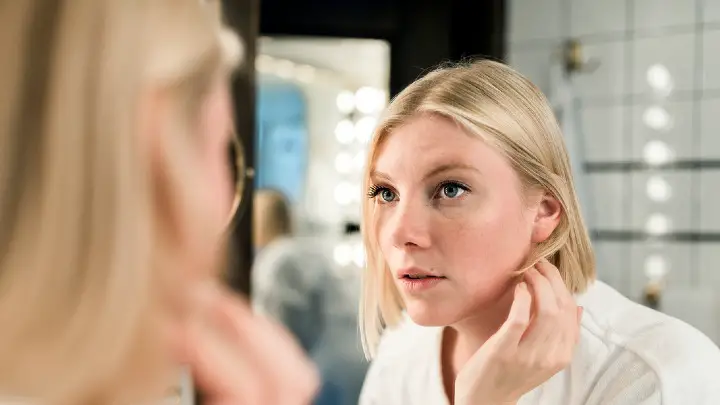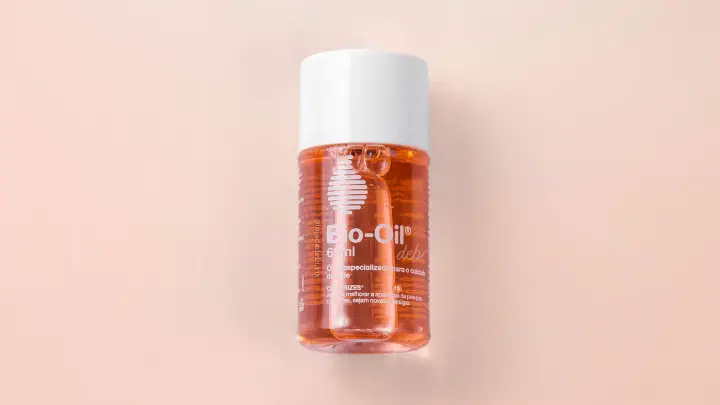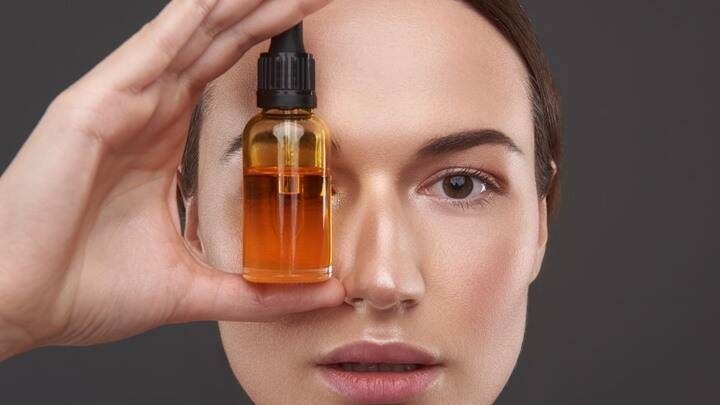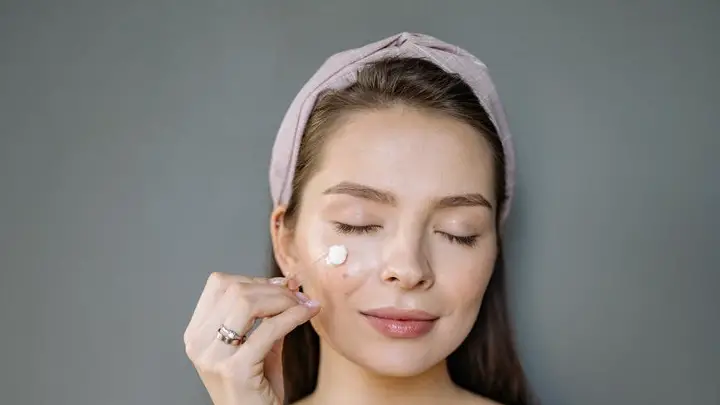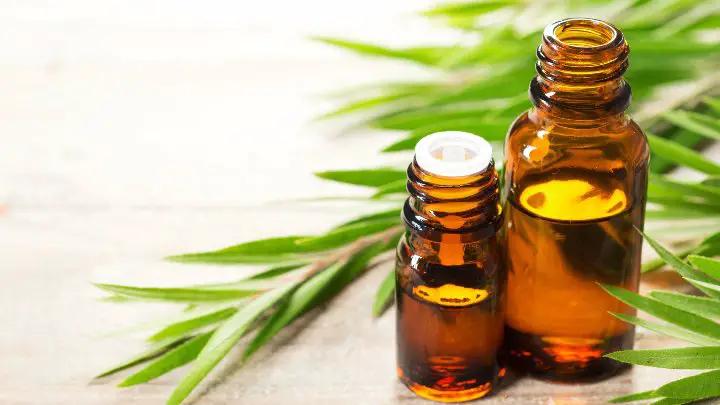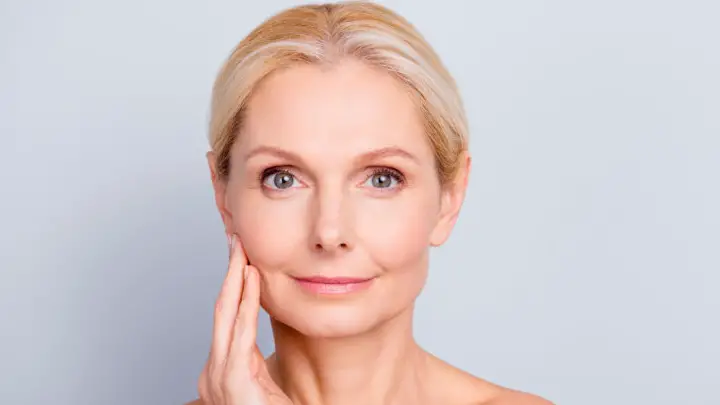Sallow skin is a condition that several factors, including poor diet, dehydration, and illness can cause. It is characterized by a yellowish or pale complexion and can often make a person look tired and sick.
Sallow skin can be difficult to get rid of, but there are a few things you can do to help improve your skin’s appearance.
In this article, we will discuss the causes of sallow skin and some tips for improving its appearance. If you are concerned about the way your skin looks, then keep reading to learn more.
What is sallow skin?
Sallow skin (also known as sallow complexion) is a term used to describe skin that looks yellowish or pale, often with a grayish hue. It typically appears on the face but can also affect other parts of the body.
Sallow skin can be particularly noticeable in people with lighter complexions, as the yellowish or grayish tone can stand out more prominently against their skin. People with sallow skin may also experience dryness, as well as a loss of elasticity and texture.
If you’re concerned that you might have a sallow complexion, it’s important to see a doctor to determine the cause. Treatment will depend on the underlying cause of the condition but may include dietary changes, supplements, or medications.
Causes of sallow skin
1. Aging
As we age, our skin loses its elasticity and becomes less vibrant than it once was when we were younger. The skin can also become thinner and less elastic with age, which can further accentuate the appearance of sallow skin.
2. Anemia
Anemia can cause sallow skin because it affects your ability to make red blood cells. If you have anemia, you may also have fatigue, poor concentration, and fainting spells due to low hemoglobin levels.
3. Poor diet
Junk food is loaded with added sugar, which can cause your insulin levels to spike. This, in turn, causes chronic inflammation, which can lead to a sallow complexion.
4. Dehydration
When your body doesn’t have enough water to function properly, you start to develop several issues, including dryness, reduced elasticity, and a sallow complexion.
5. Smoking
Smoking can have a direct effect on the skin, leading to premature wrinkles and a sallow complexion. This is because smoking restricts the flow of oxygen to the skin, which then causes the skin to appear sallow.
6. Lack of sleep
When you don’t get enough sleep, your body doesn’t have time to repair itself from the day’s damage. This can lead to a buildup of toxins in your skin, which can then cause your complexion to turn sallow.
7. Vitamin deficiency
If your complexion is sallow and you’re not sure why; it’s worth getting checked out by a doctor to rule out vitamin deficiency. Vitamin deficiency can be a serious condition, but it’s usually treatable with medication or lifestyle changes.
8. Liver problems
When liver problems affect the production of bile, it can cause a sallow complexion. Bile is a yellowish-green fluid that helps the body break down fats. If your liver isn’t producing enough bile, it can cause your complexion to turn sallow.
9. Malabsorption
Malabsorption is a condition where your body is unable to absorb nutrients from food properly. This can lead to a whole host of problems, including sallow skin.
10. Certain medications
Certain medications like amphetamines can also take a toll on the skin, causing it to dry out and appear sallow. If you have a sallow complexion, it may be worth asking your doctor about the side effects of any medications that you’re on.
How do you treat sallow skin?
Use topical products
If you have a sallow complexion, try using topical products such as moisturizers and serums. This is because they contain ingredients like vitamin C and vitamin E that help brighten and nourish the skin.
Eat healthy foods
Eating healthy foods such as fruits, vegetables, and fish can help reduce the appearance of sallow skin. This is because these foods contain essential nutrients such as proteins and vitamins, which can help improve the appearance of the skin.
Hydrate
Another great way to treat a sallow complexion is to drink plenty of water. Make sure you’re getting at least eight glasses of water a day, and more if you can. You should also avoid diuretics like caffeine and alcohol, which can dehydrate you.
Exfoliate regularly
Exfoliating helps in removing dead cells from the skin, making it appear brighter and healthier. Use a loofah or exfoliating mitt (if you have one) to remove dead skin cells from the surface of your skin.
Avoid smoking
Smoking affects the appearance of your skin, so avoid smoking and your skin will start to look brighter and healthier.
Sleep more
Sleeping helps your skin cells repair and regenerate, which can help brighten your skin and improve its overall appearance. So next time you’re feeling tired, don’t fight it – just give in and take a nap. Your skin will thank you for it.
See a doctor
Sallow skin can be a sign of an underlying health problem, which is why it’s important to see a doctor if you’re concerned about it.
Your doctor will be able to find out the cause of your sallow complexion and recommend the best treatment plan to help you achieve brighter healthier skin.
FAQs

What does sallow skin look like?
Sallow skin typically appears yellowish or pale in tone, often with a greenish or grayish hue.
It can also appear dry and rough, with an almost waxy texture. The skin may also have an uneven coloring or an orange-ish tint.
What causes yellow skin?
The most common cause of yellow skin is jaundice, which is a condition that occurs when the liver is not functioning properly.
Jaundice causes the body to produce too much bilirubin, a yellow pigment that gives yellow skin its color.
Is pale skin permanent?
No, it is not.
You can improve the appearance of pale skin by eating healthy foods, maintaining a healthy lifestyle, and following a good skincare routine.
If you have pale skin, it’s also important to see a doctor to find out the underlying cause. Treating the underlying cause will usually improve the appearance of pale skin.
Conclusion
Sallow skin is a yellowish or pale complexion that can be caused by several factors, such as anemia, aging, and certain medications.
If you have sallow skin, you may be self-conscious about your appearance. However, there are ways to improve the appearance of your skin.
These include using topical products, eating healthy foods, and exfoliating regularly. You should also make sure to see a doctor, as they can help identify the underlying cause of your sallow complexion and recommend treatments.
Thanks for reading.
Looking for more information on skin concerns? Visit Serum101 today.
